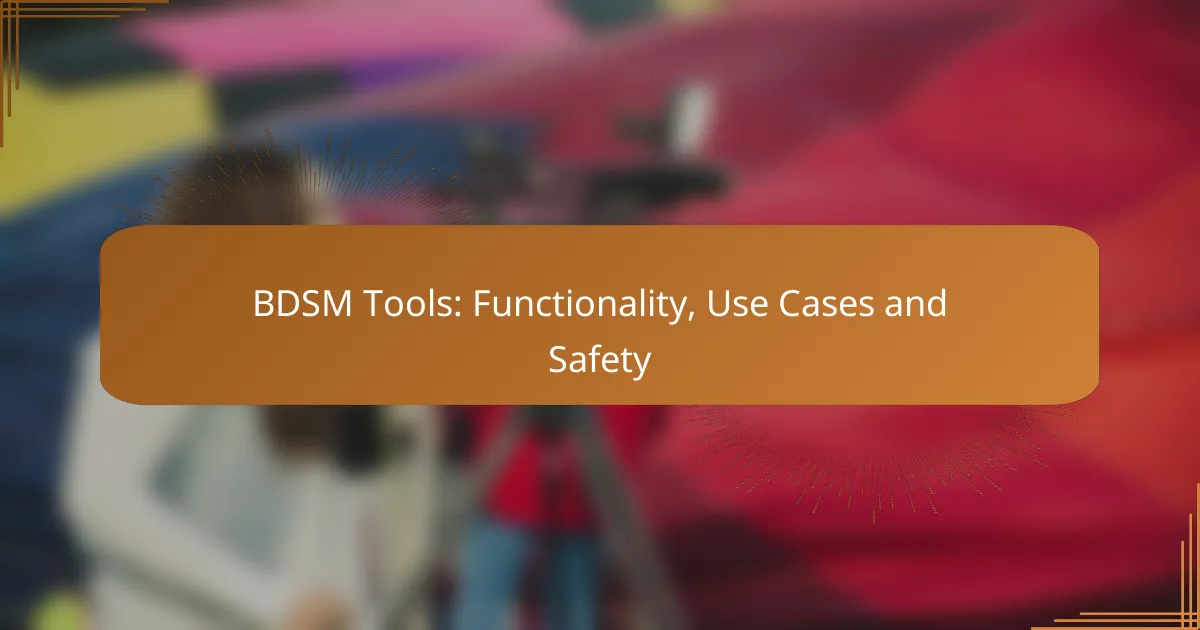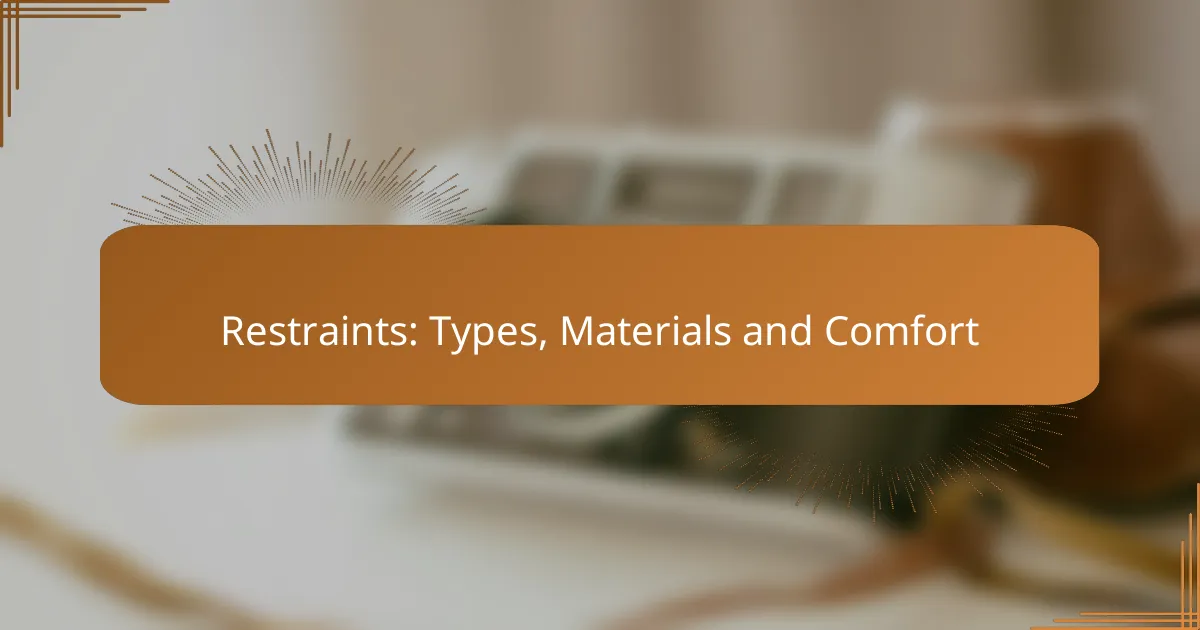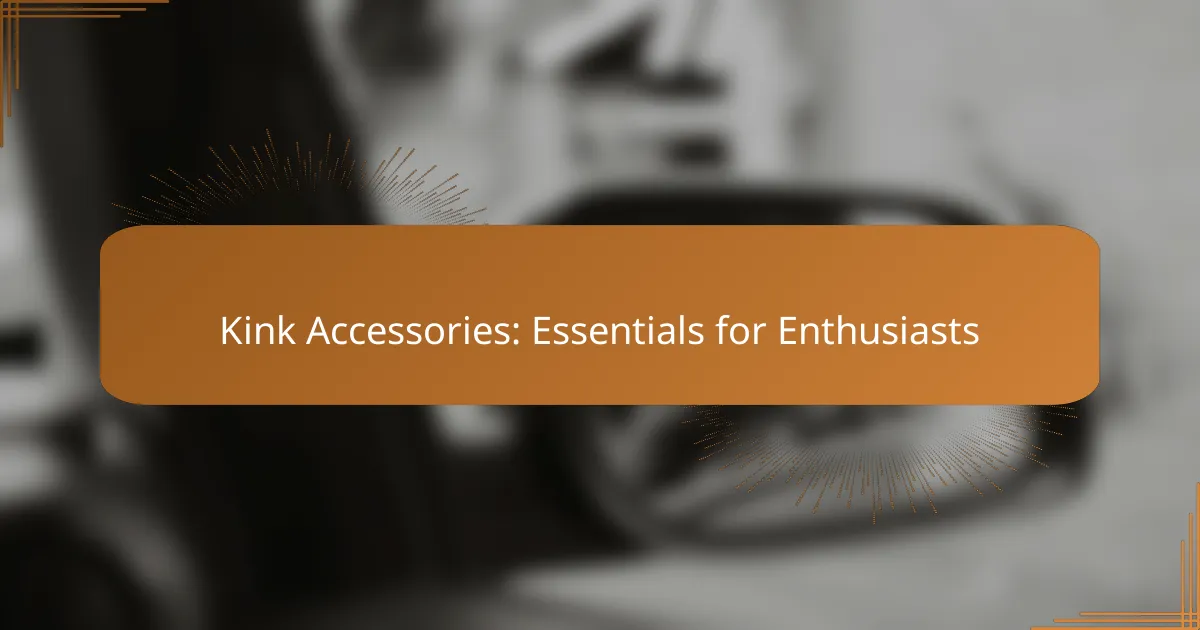[censured] tools are essential for enhancing experiences in [censured], discipline, dominance, submission, sadism, and masochism. They range from basic restraints and impact toys to safety gear, each serving specific functions that cater to various preferences and practices. Understanding their use, prioritizing consent, and maintaining open communication are crucial for ensuring a safe and enjoyable exploration of [censured].
![What are the best [censured] tools for beginners?](/wp-content/uploads/what-are-the-best-[censured]-tools-for-beginners-1.webp)
What are the best [censured] tools for beginners?
The best [censured] tools for beginners include items that are easy to use, safe, and versatile. Starting with basic restraints, impact toys, and essential safety gear can help newcomers explore [censured] in a comfortable and enjoyable way.
Beginner-friendly restraints
Beginner-friendly restraints typically include soft cuffs, [censured] tape, and silk scarves. These options are gentle on the skin and easy to remove, making them ideal for those new to [censured]. Look for adjustable cuffs that can fit various wrist sizes and are made from comfortable materials.
When using restraints, ensure that the person being restrained can easily communicate their comfort level. Always have safety scissors nearby to quickly release someone if needed.
Impact toys for novices
Impact toys suitable for novices include paddles, floggers, and light whips. These tools can provide a range of sensations, from gentle taps to more intense strikes, depending on the user’s comfort level. Start with softer materials like rubber or fabric to gauge reactions.
It’s essential to establish clear boundaries and safe words before using impact toys. Begin with light strikes and gradually increase intensity as comfort grows, ensuring that both partners feel safe and respected throughout the experience.
Safety gear essentials
Safety gear for [censured] includes items like safety scissors, a first aid kit, and a safe word system. Safety scissors are crucial for quickly cutting restraints in case of an emergency. A first aid kit should contain basic supplies to address minor injuries or discomfort.
Establishing a safe word is vital for communication during play. Choose a word that is easy to remember and not likely to be confused with regular conversation. This ensures that all parties can express discomfort or the need to stop at any time.
![How to use [censured] tools safely?](/wp-content/uploads/how-to-use-[censured]-tools-safely-2.webp)
How to use [censured] tools safely?
Using [censured] tools safely involves understanding their function, establishing clear communication with partners, and adhering to safety protocols. Prioritizing consent and awareness of limits is essential for a positive experience.
Safety protocols for [censured]
Safety protocols for [censured] include using safe words, ensuring that all participants understand their limits, and having safety equipment readily available. It’s crucial to communicate openly about boundaries before engaging in any activity.
Always check the integrity of [censured] tools, such as ropes or cuffs, to prevent accidents. Consider using quick-release mechanisms or safety scissors to ensure that you can quickly free someone if needed.
Regularly assess the physical and emotional state of all participants during the session. If anyone feels uncomfortable or unsafe, stop immediately and discuss the situation.
Aftercare practices
Aftercare practices are vital for emotional and physical recovery following [censured] activities. This can include cuddling, discussing the experience, or providing water and snacks to help participants rehydrate and relax.
Each person’s aftercare needs may vary, so it’s essential to communicate preferences beforehand. Some may require more physical comfort, while others might benefit from verbal reassurance or time alone to process their feelings.
Engaging in aftercare can help reinforce trust and connection between partners, making future sessions more enjoyable and safe. Always check in with each other to ensure that everyone feels supported post-session.
![What are the different types of [censured] tools?](/wp-content/uploads/what-are-the-different-types-of-[censured]-tools-3.webp)
What are the different types of [censured] tools?
[censured] tools encompass a variety of equipment designed to enhance the experience of [censured], discipline, dominance, submission, sadism, and masochism. These tools serve specific functions, ranging from physical restraint to sensory stimulation, and are integral to many [censured] practices.
Restraints and [censured] gear
Restraints and [censured] gear are essential for controlling movement and enhancing submission. Common types include handcuffs, ropes, and [censured] tape, each offering different levels of security and comfort. When choosing restraints, consider the material, ease of use, and the comfort of the restrained partner.
Always prioritize safety by having safety shears nearby to quickly release someone if needed. It’s also advisable to discuss limits and safe words beforehand to ensure a consensual experience.
Impact play tools
Impact play tools are designed to deliver physical sensations through striking. Popular options include paddles, whips, and floggers, each providing unique sensations based on their design and material. For instance, a leather paddle may offer a thudding sensation, while a flogger can create a stinging effect depending on the number and type of tails.
When engaging in impact play, start with lighter strikes to gauge comfort levels and gradually increase intensity. Always communicate openly with your partner about their preferences and limits to enhance the experience while ensuring safety.
Role-play accessories
Role-play accessories help create immersive scenarios that enhance the [censured] experience. Items like masks, costumes, and props can facilitate power dynamics and fantasies. For example, a dominatrix outfit can establish authority, while a submissive collar signifies submission.
When selecting role-play accessories, consider the comfort and preferences of all participants. Ensure that any props used are safe and appropriate for the scenario, and discuss boundaries to maintain a consensual and enjoyable experience.
![How to choose the right [censured] tools?](/wp-content/uploads/how-to-choose-the-right-[censured]-tools-4.webp)
How to choose the right [censured] tools?
Selecting the right [censured] tools involves understanding your preferences, safety considerations, and the dynamics of your play. Prioritize quality materials, match tools to your experience level, and communicate openly with your partner to ensure a safe and enjoyable experience.
Considerations for material safety
Material safety is crucial when choosing [censured] tools, as different materials can affect skin sensitivity and overall safety. Common materials include leather, silicone, metal, and wood, each with distinct properties. For instance, silicone is body-safe and easy to clean, while metal can provide a different sensory experience but requires careful handling.
Always check for non-toxic finishes and ensure that any tools used on the skin are hypoallergenic. Avoid materials that can cause irritation or allergic reactions, such as certain plastics or untreated woods. If unsure, opt for tools specifically labeled as body-safe.
Matching tools to experience level
When selecting [censured] tools, consider your and your partner’s experience levels. Beginners may benefit from softer restraints, such as fabric cuffs, while more experienced users might prefer leather or metal options for added intensity. Start with versatile tools that allow for gradual exploration.
As you gain experience, you can introduce more complex tools, such as impact toys or [censured] equipment. Always discuss boundaries and comfort levels with your partner before trying new tools. A good rule of thumb is to start with one new tool at a time to gauge reactions and adjust accordingly.
![What are the use cases for [censured] tools?](/wp-content/uploads/what-are-the-use-cases-for-[censured]-tools-5.webp)
What are the use cases for [censured] tools?
[censured] tools serve various purposes, enhancing experiences through physical sensations, psychological play, and relationship dynamics. They can be used for pleasure, exploration, and establishing trust between partners.
Enhancing intimacy
[censured] tools can significantly enhance intimacy between partners by fostering open communication and trust. Using items like blindfolds or restraints can heighten sensory experiences, allowing individuals to focus on their partner’s reactions and needs.
For example, incorporating soft restraints can create a sense of vulnerability, leading to deeper emotional connections. It’s essential to discuss boundaries and consent beforehand to ensure a safe and enjoyable experience.
Exploring power dynamics
Power dynamics are central to [censured] practices, and tools can facilitate this exploration effectively. Items such as collars, whips, or paddles can symbolize control and submission, allowing partners to engage in role-playing scenarios that reflect their desires.
When exploring power dynamics, it’s crucial to establish safe words and clear agreements to maintain safety and consent. This ensures that both partners feel secure while navigating their roles, whether dominant or submissive.
![What are the risks associated with [censured] tools?](/wp-content/uploads/what-are-the-risks-associated-with-[censured]-tools-6.webp)
What are the risks associated with [censured] tools?
[censured] tools can pose various risks, including physical injuries and emotional distress. Understanding these risks is crucial for safe and consensual practice.
Physical risks of [censured]
Physical risks in [censured] primarily involve injuries from equipment or improper techniques. Common injuries include bruises, cuts, and nerve damage, particularly if tools are used without adequate knowledge or care.
To mitigate these risks, always use equipment designed for [censured], ensure it is in good condition, and avoid using excessive force. Regularly check in with your partner to assess comfort levels and adjust as necessary.
Emotional safety concerns
Emotional safety is a significant aspect of [censured], as it can involve vulnerability and trust. Participants may experience feelings of anxiety or discomfort if boundaries are not clearly communicated or respected.
Establishing safe words and aftercare practices is essential for emotional well-being. Discuss limits and expectations beforehand to create a trusting environment that allows for open communication during and after the scene.
![How to clean and maintain [censured] tools?](/wp-content/uploads/how-to-clean-and-maintain-[censured]-tools-7.webp)
How to clean and maintain [censured] tools?
Cleaning and maintaining [censured] tools is crucial for hygiene and longevity. Proper care prevents the buildup of bacteria and ensures that the tools remain safe and functional for use.
Cleaning protocols for different materials
Different materials used in [censured] tools require specific cleaning protocols to maintain their integrity and hygiene. Common materials include metal, leather, silicone, and rubber, each with unique care requirements.
For metal tools, such as cuffs or paddles, use warm water and mild soap. Avoid abrasive cleaners that can scratch the surface. After cleaning, dry thoroughly to prevent rust.
Leather items, like restraints or whips, should be wiped with a damp cloth and treated with a leather conditioner to keep them supple. Do not soak leather, as it can damage the material. Silicone and rubber tools can usually be washed with soap and water or placed in the dishwasher if they are dishwasher-safe.



